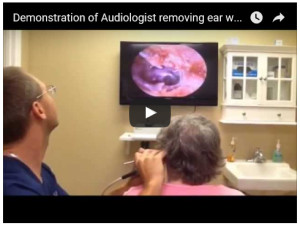 Earwax production is a normal and essential bodily function, however there are times when excess earwax can pose a problem and begin interfering with everyday hearing. When this occurs it is necessary to seek help to remove it. While scientists are still unsure as to why we actually have earwax, it does serve to trap dirt and other small particles from entering the ear canal and potentially causing damage to the eardrum. It has also been determined that earwax has anti-fungal and anti-bacterial properties. The amount of earwax produced by each individual varies; some only produce a small amount of wax daily whereas others produce significantly more. So how do we determine if we need intervention in helping to remove our earwax?
Earwax production is a normal and essential bodily function, however there are times when excess earwax can pose a problem and begin interfering with everyday hearing. When this occurs it is necessary to seek help to remove it. While scientists are still unsure as to why we actually have earwax, it does serve to trap dirt and other small particles from entering the ear canal and potentially causing damage to the eardrum. It has also been determined that earwax has anti-fungal and anti-bacterial properties. The amount of earwax produced by each individual varies; some only produce a small amount of wax daily whereas others produce significantly more. So how do we determine if we need intervention in helping to remove our earwax?
Earwax blockage is one of the most common ear conditions that physicians encounter and is typically caused by the wax getting pushed into the ear canal. Our ears are designed to be self-cleaning; the wax is only produced at the opening of the ear canal which allows for the wax to easily fall out on its own. Individuals with smaller or oddly shaped ear canals however, may be more prone to earwax blockage since it is more difficult for the wax to make its way out of the ear canal.
The use of cotton swabs or other objects inserted into the ear in an attempt to remove the earwax is one of the largest contributors to earwax blockage. Hearing aid users also have a higher rate of earwax blockage than normal, due to the insertion of a foreign object in their ears on a daily basis. The symptoms of earwax impaction may include loss of hearing, ear pain, ringing in the ear, dizziness, itching of the ear canal and a plugged or full sensation.
The safest course of action if you suspect you have an earwax impaction is to seek medical intervention. A physician can determine if your symptoms are actually caused by an earwax blockage or a more serious underlying condition. Too often when individuals try to remedy the situation on their own, it leads to further impaction, damage to the eardrum or ear canal and infection. A physician or an audiologist can safely dislodge the impacted wax by the use of a curved instrument called a curette or with the use of wax softening agents and flushing with warm water.
It is important to seek treatment for earwax blockage. If left untreated, other more serious complications can occur such as a permanent hearing loss due to acoustic trauma, a perforated eardrum, middle ear infections and external ear infections. If you think that you might have an earwax blockage, give us a call, we can safely perform earwax removal here at our office. For more information on what types of services we provide check out http://www.advancedhearinggroup.com/services/.

